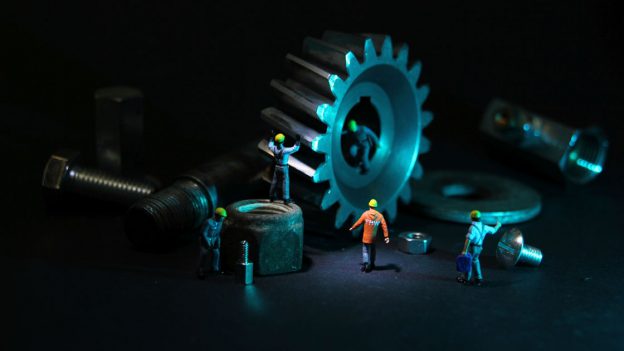Plant and equipment are the lifeblood assets of your business, so how can you get the most out of them and reduce the risks?
Here are five tips to help get you on your way.
Tip #1: Schedule maintenance based on use and environment
The manufacturer’s guide is based on average equipment use, but that might not match with how you’re using the gear, nor the configurations or customisations in place. Regular maintenance can help reduce costly repairs and fuel consumption, plus extend the equipment’s lifespan.
Prioritise your crucial equipment and plant. Collect data such as equipment availability percentage, total downtime, downtime cost, and what that translates to annually. Identify options to source spare parts that are likely to wear out, rather than rely on one supplier. This is the difference between which spare parts are ‘nice to have’ or those that are essential.
As you’re recording these details, consider how these factors affect the equipment’s maintenance and availability:
- Human (such as usage of the gear and error)
- Economic
- Equipment and tool-related
- Management
- Environmental
Tip #2: Train the operators
A key reason for plant and equipment breaking down earlier than expected is misuse. Instead, be sure to train your staff and other operators to use your equipment properly and with respect. Do they understand how it works and what’s needed for it to function well?
They’ll need refreshers, ideally every six months, particularly after equipment upgrades. You may have customised or reconfigured your plant over time, so parts of the manual may be obsolete.
For example, good training means your operators will know they can switch to the left lead while grading along curbs to extend the life of your motor grader. Consider these other tips:
- Explain why excessive braking isn’t a good idea
- Depending on the type of machine, avoid idling the engine before shutting down the machine. For a typical wheel loader, this can damage the turbocharger, which may cost thousands to repair
- Guide staff about how to optimise lower work modes and productivity rather than running the machine at full throttle – the former saves on fuel costs
- Mix up the training so it involves hands-on, reading, watching videos, doing quizzes, allowing trainees to ask questions of experts, etc
- Don’t assume a truck driver will know how to operate cranes or other equipment attached to their rig, for example. Avoid taking shortcuts in training
- Make sure staff know which is the correct equipment for the task
- When not in use, store the equipment or plant correctly
The Australian Tax Office is offering incentives this financial year for small businesses to invest in technology skills and training. Find out more here.
Tip #3: Inspect for signs of wear and tear
Another reason that machinery, equipment, or plant break down or need parts replaced is wear and tear. Keep on top of these:
- Check your machinery often and thoroughly for signs of damage, wear, and tear (cracks, chipped paint, loose bolts, etc)
- Address leaks, grease build-up, and excess oil
- Top up lubricants for gears and other moving parts
- Replace parts as needed, consider investing in quality parts
- Encourage operators and other staff to be alert to and share warning signs (unusual vibrations or noises) and potential risks for damage
- Ensure managers check weekly how many hours machines were used, for which tasks, and to measure lubrication levels
- Log your inspection date and what you find, any follow-ups or recommendations
- Compare your report with the manufacturers’ recommendations and expectations for the equipment
If you spot issues with the electrical system, be sure to follow the inspection and testing regulations of the state and territory where you’re based, such as this guide from Safework SA.
Tip #4: Clean regularly
Hand cleaning your plant could be time-consuming, difficult, and unsafe. You might need special equipment such as power or pressure washing, but if that’s not practical, consider bringing in an expert for the following.
- Regularly clean filters and seals to keep moving parts dust, grime, and contaminant free
- Spot corrosion, noting where and when it happens, so you’ll be able to do predictive maintenance
- Once you’ve lubricated the machine, move on to degreasing and polishing (choose if daily, weekly, or monthly works best for you)
- Assess the environment in which your equipment is used or stored, to address issues that could be unnecessarily increasing your cleaning challenges
Tip #5: Protect your gear with plant and equipment insurance
Insurance is an important part of your risk management strategy. Protect your assets with a plant and equipment insurance policy. It’s relevant for a range of equipment, including graders, bulldozers, compactors, pile drivers, hole diggers, cranes, forklifts, bobcats, etc.
Plant and equipment insurance can cover:
- Theft
- Damage
- Liability while being used
- Wet or dry hire
- Machinery breakdown
- Agreed value (for replacement)
- Loss of revenue
- Driving risks while on a public road
- Liability coverage extending to all your business activities
Let us guide you on the best fit for your business operations. Bundling policies together can often earn you discounts and helps minimise the risks of under-insurance.


